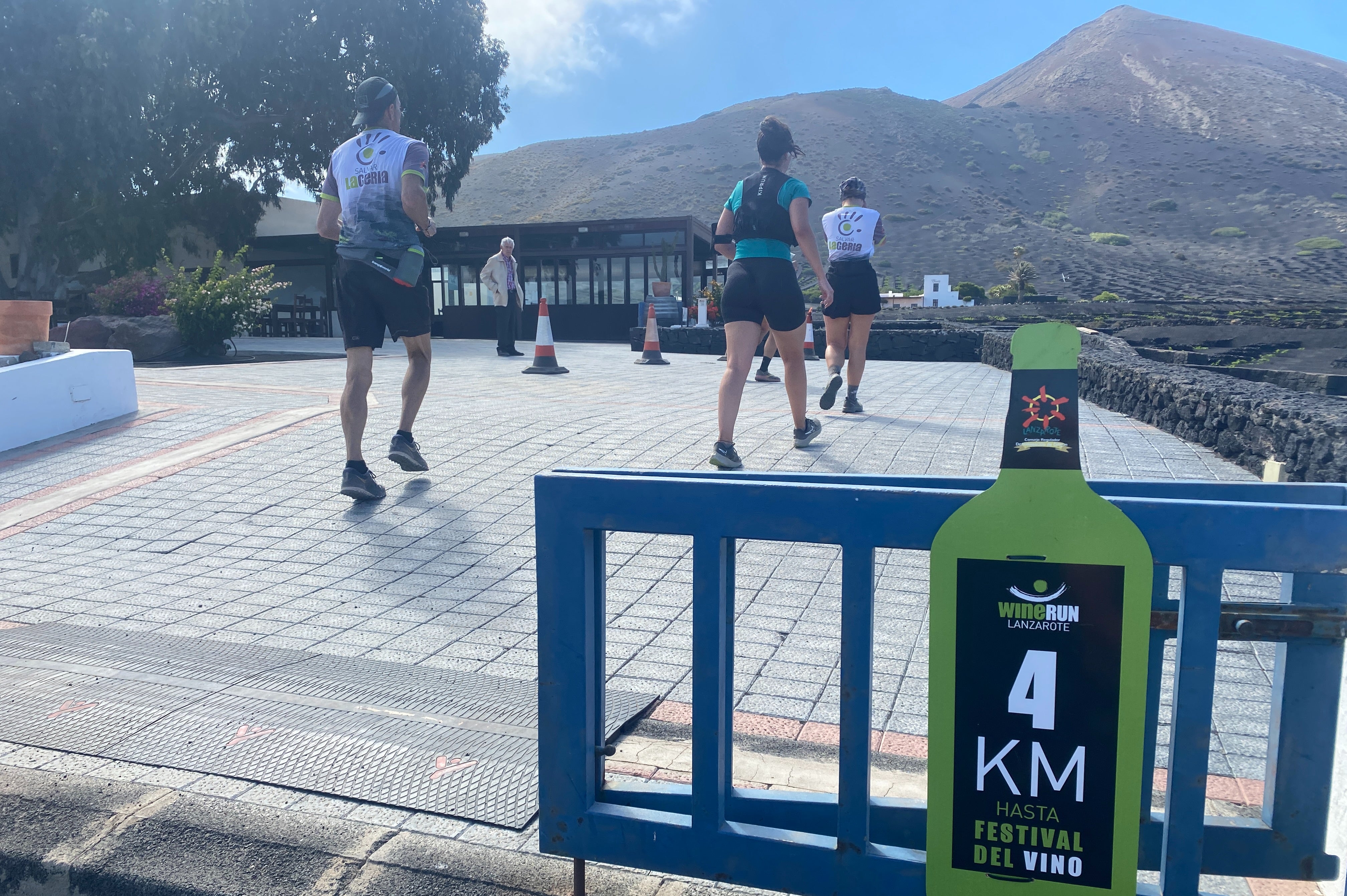Shortly after crossing the start line of my 12km race with a cheery crowd of fellow runners, I’m met with eerie blackened lava fields, pitted with craters. The excited chatter from our pre-race Zumba warm-up quickly dies down as we begin to tackle rising heat, a crosswind and – toughest of all – volcanic ash underfoot. The black, dusty gravel crunches and spills into my trainers with each step.
When I’d heard about a ‘wine run’ that was making a comeback after the pandemic, I was quick to sign up. I had visions of trotting through row upon row of green vines, stopping for the occasional glass of the good stuff while surveying lush surroundings in the sunshine.
But this was the Lanzarote Wine Run, taking place on the lunar-like landscape of the Spanish island. The event consists of a 12km or 23km route through the wine-growing region of La Geria (you can run, or walk the shorter trail), culminating with a wine festival at the finish line.

Read more: Spanish islands with sun and volcanic peaks that you should make your next holiday destination
The irony is that this ash known as “picón”, which is making the run so much harder, is precisely what makes Lanzarote’s wine so good. The island was devastated by volcanic eruptions in the 1730s, and vast areas are still buried beneath lava. But islanders showed resourcefulness in the face of adversity and discovered that the island’s new volcanic composition allowed grapevines to survive, and even flourish.
A couple of days before the run, I joined a vineyard walk and tapas tour with Wine Tours Lanzarote to learn more about wine-making on the island. Our group of four was steered through three different wineries by Anita Sanz Sanchez, who moved to Lanzarote from Madrid in 2006 after falling in love with the island while on holiday.
Anita revealed her passion for the island’s wines as we explored Bodegas Rubicón, a vineyard that I would soon be running through. Flanked by the flaming-red hills of Timanfaya National Park – the volcanoes whose violent eruptions gave the island its character – the bodegas’ dark, sweeping terrain is punctuated by dug-out hollows, each with a vine at its heart.
Anita explained how creating these “hoyos” is more labour-intensive…
Click Here to Read the Full Original Article at The Independent Travel…
